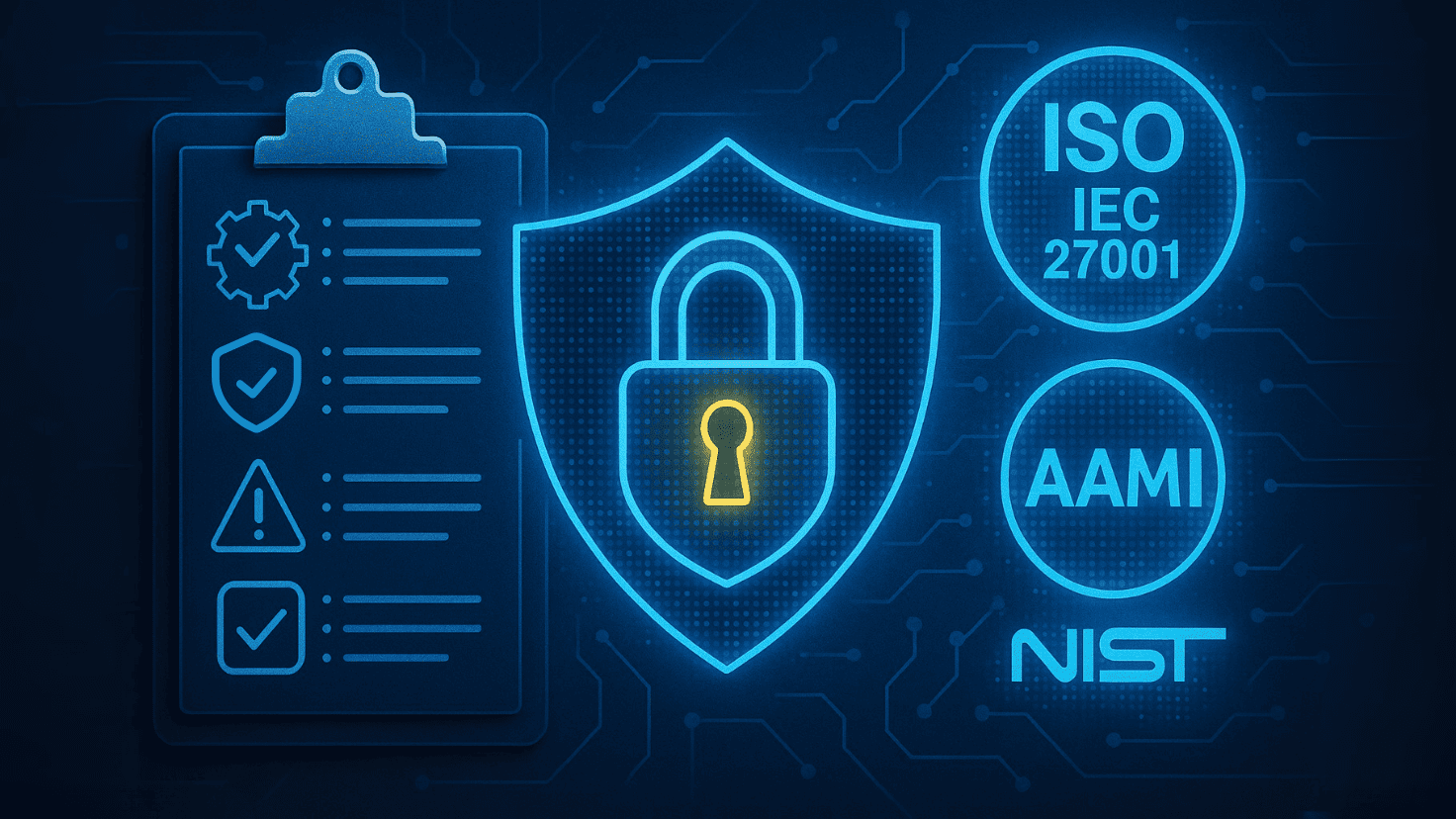As medical technology becomes increasingly connected through the Internet of Medical Things (IoMT), cloud platforms, and AI-driven devices, cybersecurity has become a top regulatory priority. Once considered a purely technical issue handled by IT, security is now central to how regulators evaluate device safety and effectiveness.
This blog explores why cybersecurity matters in MedTech, highlights the key standards and frameworks shaping regulatory expectations, and outlines the practical challenges regulatory teams face in navigating this evolving landscape.
Why Cybersecurity Matters in Medical Devices
The consequences of a cybersecurity breach in healthcare are uniquely high. Unlike other industries, a successful attack on a connected medical device doesn’t just put sensitive data at risk, it can interfere with device performance and, in some cases, endanger patient safety. High-profile incidents, such as ransomware attacks on hospital networks or vulnerabilities in implantable devices, have made regulators acutely aware of these risks.
As a result, cybersecurity is now viewed as inseparable from device safety. Regulators increasingly expect manufacturers to demonstrate how they are addressing threats across the device lifecycle.
For companies, this shift means that robust cybersecurity is no longer optional. It is a prerequisite for market access and for maintaining trust with patients and providers.
Key Cybersecurity Standards and Frameworks
To support manufacturers, several international standards and technical reports provide structured approaches to security. ISO/IEC 27001 helps organizations establish comprehensive information security management systems, while ISO/IEC 81001-5-1 focuses more narrowly on requirements for health software and IT security in clinical environments.
The Association for the Advancement of Medical Instrumentation (AAMI) has also developed guidance specific to MedTech, including TIR57 for incorporating security into device risk management and TIR97 for handling postmarket vulnerabilities and incident response. In addition, the widely adopted NIST Cybersecurity Framework offers a flexible structure for aligning security activities with regulatory and business priorities.
Together, these standards create a roadmap for manufacturers to not only design more secure products but also demonstrate compliance in a way that resonates with regulators.

Regulatory Guidance Across Major Markets
Regulators around the world are embedding cybersecurity expectations into their frameworks. In the United States, the FDA requires manufacturers to address cybersecurity in both premarket and postmarket contexts.
Premarket submissions must show that devices are designed with security in mind, while postmarket obligations include patch management, vulnerability monitoring, and a coordinated disclosure of risks. The FDA has also emphasized the importance of cybersecurity labeling, ensuring that end users understand their role in maintaining device security.
In Europe, cybersecurity is woven into the essential safety and performance requirements of the Medical Device Regulation (MDR) and In Vitro Diagnostic Regulation (IVDR). Guidance from the Medical Device Coordination Group (MDCG) provides additional clarity, stressing the need for lifecycle security, risk management, and thorough technical documentation.
Other markets including Canada, Australia, and Japan are moving in the same direction, largely aligning with the principles set out by the International Medical Device Regulators Forum (IMDRF). This convergence underscores the need for manufacturers to adopt a harmonized, globally minded approach to cybersecurity compliance.
Practical Challenges for Regulatory Teams
While the importance of cybersecurity is clear, implementing it within regulatory processes is rarely straightforward. One major challenge is balancing the speed of innovation with the need for rigorous documentation. In fast-moving MedTech environments, regulatory teams must work closely with engineers and IT professionals to ensure that cybersecurity considerations are captured without stalling development timelines.
Another ongoing hurdle is managing updates and patches. Unlike traditional quality documentation, cybersecurity compliance is a living process. Devices must be continuously monitored, with vulnerabilities identified and addressed in real time. This creates complexity around version control, change management, and demonstrating to regulators that updates are effectively tracked and validated.
Finally, there is the challenge of communication. Cybersecurity compliance requires collaboration across functions that often speak very different languages; engineering, IT, and regulatory affairs. Regulatory teams are increasingly taking on the role of translators, ensuring that security measures are properly documented in submissions and audits.
Conclusion
Cybersecurity in MedTech has moved far beyond firewalls and passwords. It is now a core element of device safety, directly tied to regulatory approval and patient trust.
As threats evolve and connectivity expands, regulators expect manufacturers to integrate cybersecurity into every stage of the device lifecycle. For regulatory teams, this means more than just staying informed.
It requires embedding cybersecurity into compliance strategies, aligning with international standards, and preparing to demonstrate security rigor during submissions. Ultimately, effective cybersecurity is not only about satisfying regulators, it is about protecting patients and ensuring that medical technology continues to deliver safe, reliable care.

